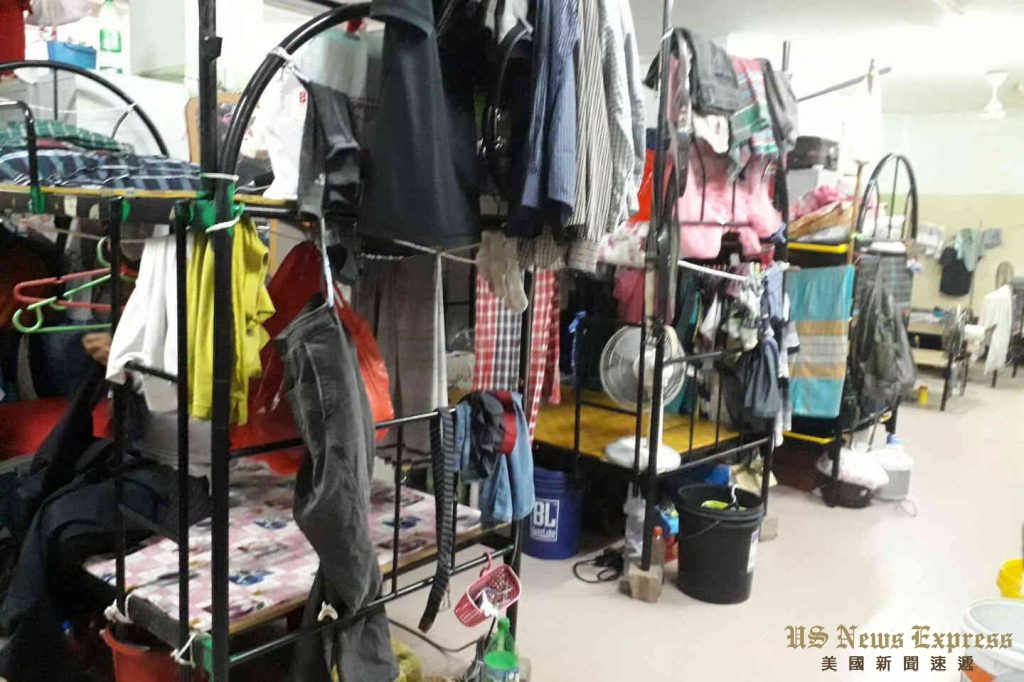Migrant workers’ living condition in South East Asia
By Neil Foo
kuala lumpur — The latest waves of Covid-19 pandemic in Thailand, Malaysia and Singapore have been concentrated among migrant workers. As a result, the migrant workers are the blame of the spike of the century pandemic in the South East Asia lately.
Since end of 2020, a major wave of infections appeared among the millions of temporary migrants working in the factories, construction, and the retail sectors such as the big shopping malls.

The pandemic control has included discriminatory actions against migrant workers by isolating them. This increased racism towards the migrants despite finding the root cause of the wide spread of the disease.
As the matter of fact, the worsening of the rising of Covid-19 cases by the growing of the foreign labour disease clusters which are believed to be spurred by the workplace and cramped accommodation of the workers.
All these were due to cost-conscious by the business owners and weak supervision and enforcement by the authority in the “normal” days.
Hence, the amendment of the act for the betterment of the short-term inhabitants condition in the respective soil is deemed necessary.
The Government’s proposed amendment of the Workers’ Minimum Standards of Housing and Amenities Act is bound to raise costs for businesses which employ a large number of foreign workers in driving their economy.
Migrant Workers Driven Economy Vs Pandemic Management
Even Singapore, despite their much better and controlled policy and execution in place, a respectable developed country status was shadowed by the significant cases of the spread of Covid-19 amongst the migrant workers at one time.
Thailand is the one of the world main supplier of marine products, produces approximately 40 per cent of global canned tuna, frozen shrimp and other seafood products.
There is an estimation of 400,000 migrants with the majority from Myanmar work in Thailand’s seafood processing sector. In December 2020, 12,000 foreign workers in the central wholesale shrimp market in Samut Sakhorn tested positive for COVID-19.
In Malaysia, ever praised as one of the most successful countries in containing the pandemic in the beginning. However, the humiliation come after the state election of Sabah with the spike of the disease in which the political rally did not follow the SOP to curb the pandemic during the campaign period.
Both the countries claimed that the virus was brought into Thailand by workers sneaking across the Myanmar border to Thailand and from Southern Philippines sea-roads to Sabah, Malaysia.
Ironically, the international news widely reported the unhealthy working conditions and outbreaks among migrant workers in the world class rubber glove factories in Malaysia, which have flourished during the pandemic as global demand for PPE shot up, were badly hit by migrant workers infection of Covid-19 disease.
The poor living conditions of migrant workers in Malaysia and Thailand would not help the country’s reputation in the international arena. As the worst scenario, the factories were fined by the hefty penalty for discriminating the foreign workers in minimum wages and living conditions.
Over the past two decades, South East Asia business owners have largely been dependent on low-paid workers to gain cost competitiveness. Foreign workers for the longest time have been considered to be cheap labour and “easy to be hired” for many businesses.
The new mandatory requirements for the betterment of the migrant workers minimum wages and living condition will cause sharp pain to entrepreneurs in the short term but will yield long-term benefits, particularly in terms of ESG (environment, social and governance) compliance.
The Act requires employers to ensure that workers’ accommodation complies with minimum standards include the compulsory requirement for employers to provide accommodation that fulfils the set standards; to bear the cost of accommodation, transfer and testing of workers; to monitor foreign workers during working hours at the premises and after work at their accommodation.
The real action in place and policy execution are long overdue and the short-term pain is necessary not just because of the public health crisis and foreign workers’ rights, but also to equalize the cost of hiring locals and accelerate automation and industrial upgrading that have been stalled by the easy availability of cheap foreign labour.
South East Asia, this is the time to review for the structural change of the Migrant Workers Economy Structure especially for the leading countries in the region like Thailand and Malaysia !
【New South East Asia Financial 】Money and Honey in the South East Asia
【New Southeast Asia Financial 】Funders Are Eyeing on Southeast Asia



















